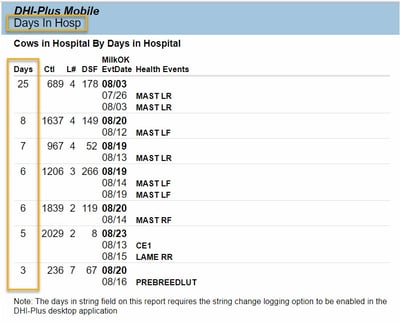Getting the settings right while recording dairy records data can make all the difference when it comes time to pull that data out and analyze the results. String logging is a simple setting in DHI-Plus than can make a big difference when it comes to analyzing herd data.
Pen changes can be tracked and logged for many benefits.
- How long are cows in the hospital string?
- What string are they coming from?
These answers, and others, lie in the data files. If turned on and set properly, this feature can be pulled out and used for some great insights.
String Change Tracking in DHI-Plus
The DHI-Plus herd management software has a simple and efficient way to track string changes. You can choose to store the string moves in HEALTH or User Defined 21.
To check the setting, go to Options -> General -> Strings tab, and you’ll find a drop-down menu for Save string changes in. Decide where you want to store it and as you make string changes they will be automatically logged in the selected field.
When I’m asked, “Which should I choose, HEALTH or UDF21, to store the string logging?” I answer, "It depends on how you like to see the data listed." Some want to reserve the HEALTH field for repro and health comments only. Others want to group all the events together in date order - so they see the sequence of repro, treatments, and string moves together.
It’s your choice.
What can you do with string changes?
If string changes are stored, one thing you’ll be able to see is how long cows are in the hospital pen. You can see an example of the DHI-Plus Mobile app Days in Hosp report below. Checking a report like this frequently can help you find those cows that are lingering in the hospital a little too long… then you can check with the maternity crew and see what’s happening.
For another example of what you can do, I worked with a dairy client recently and we used the string logging feature to find why some animals were not in the strings he expected.
It was very helpful to trace the movements of the cows in the data and see the evidence the string logging provided. He found he needed to make some management changes and was grateful it was so easily identifiable in the data.
Conclusion
String logging is one benefit of examining how the settings in the software can help you establish good data recording practices. Let’s let the data tell us the facts so we can make good decisions and be more efficient.


